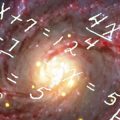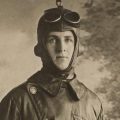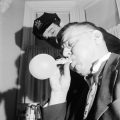SAO’s Giovanni Fazio to give Secretary’s Distinguished Research Lecture
Dr. Giovanni Fazio, senior physicist at the Smithsonian Astrophysical Observatory, will deliver the 2009 Secretary’s Distinguished Research Lecture, entitled “Viewing the Universe with Infrared Eyes: The Spitzer Space Telescope,” on Nov. 17 at 2:00 p.m. in the Baird Auditorium at the Natural History Museum. The entire Smithsonian community is invited and encouraged to attend. Following the lecture, there will be a reception in the Executive Conference Room at MNH.
Image: (Click on thumbnail for fullsize image.) This image from NASA’s Spitzer Space Telescope is of the spiral galaxy NGC 2841, located about 46 million light-years from Earth in the constellation Ursa Major.
Fazio is the ninth recipient of this award, joining the previous award recipients, Margaret Geller (SAO, 2000), Milo Beach (Freer/Sackler, 2001), Tom Crouch (Air and Space, 2002), William Fitzhugh, (MNH, 2003), Ellen Miles (Portrait Gallery, 2004) Bert Drake (Environmental Research Center, 2005), Storrs Olson (MNH, 2007), and David DeVorkin (NASM, 2008) in demonstrating the remarkable breadth and caliber of Smithsonian scholarship across the arts, humanities and sciences.
Fazio received degrees in physics and chemistry from St. Mary’s University in San Antonio, Texas, in 1954, and a doctorate in physics from the Massachusetts Institute of Technology in 1959. In that same year, at the University of Rochester in New York, Fazio pioneered the development of gamma-ray astronomy using balloon-borne telescopes, and was the co-principal investigator for the gamma-ray detector experiment on NASA’s first Orbiting Solar Observatory. Fazio joined the Smithsonian Astrophysical Observatory and the Harvard College Observatory in 1962, where he initiated a program in gamma-ray astronomy using balloon-borne and ground-based detectors. He also initiated the construction of the 10-meter optical reflector at the F. L. Whipple Observatory in Arizona, to search for ultra high-energy cosmic gamma-rays. In the early 1970s, he pioneered the development of large balloon-borne telescopes for far-infrared astronomical observations above the atmosphere, and for 20 years was principal investigator for the 1-Meter Balloon-Borne Far-Infrared

NASA’s Spitzer Space Telescope has spotted a nearly invisible ring around Saturn–the largest of the giant planet’s many rings. The ring is so diffuse that it reflects little sunlight, or visible light that we see with our eyes. But its dusty particles shine with infrared light, or heat radiation, that Spitzer can see. (Image courtesy of NASA/JPL-Caltech/Keck)
Telescope. Fazio was the principal investigator for the first infrared astronomical telescope to fly on the Spacelab II flight of the Space Shuttle in 1985. And, in 1984, he was selected as principal investigator for the Infrared Array Camera experiment on the Spitzer Space Telescope, one of NASA’s Great Observatories. The Spitzer Space Telescope was launched in August 2003, and continues to produce many important discoveries and spectacular new images of the infrared universe.
Fazio is a member of the Space Telescope Institute Council, the American Astronomical Society, the International Astronomical Union and the Optical Society of America. He is also a Fellow of the American Physical Society, the American Association for the Advancement of Science and the Royal Astronomical Society. He has been a member of numerous national and international advisory committees and is an author on more than 350 publications in scientific journals and books. Fazio has received four NASA Group Achievement Awards and in 1998 he received the Tsiolkovsky Medal from Russia’s State Museum of the History of Cosmonautics. In 2005, he received the UNICO National Marconi Science Medal and the NASA Public Service Medal, and in 2008, the Royal Society of London/COSPAR Massey Award (Gold Medal) for outstanding achievements in space science.
Please RSVP to SecretarysDistinguishedLectureRSVP@si.edu or call 202-633-2030 by Nov. 6 if you plan to attend the lecture and reception.
Posted: 7 October 2009
-
Categories:
Astrophysical Observatory , Kudos , News & Announcements , Science and Nature









